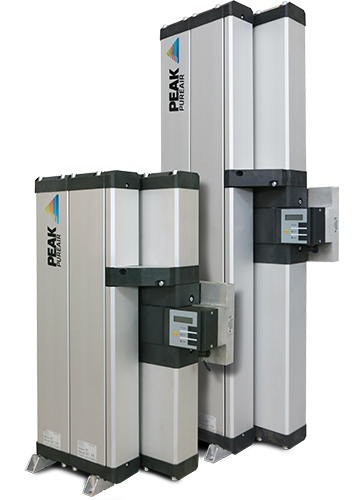Contaminants which could be affecting your compressed air system
There are 3 main types of contaminants which could pollute your compressed air.
If compressed air forms part of a production process it is vital that it is kept free of contaminants so that these do not affect your end product or process. Unfortunately, there are more than a few contaminants which could pollute your compressed air supply.
Water contaminants
Water vapour
Under certain conditions air will hold water vapour. The higher the temperature is the more water vapour can be held by air but the higher the pressure and the more water vapour is pushed out. When your compressor draws in air and compresses it, the temperature of that air increases, enabling it to hold water vapour.
Condensed water
After being compressed, the compressed air is usually cooled before exiting the compressor. This cooling results in condensed water as the water vapour the compressed air is holding becomes liquid water. Typically, in a compressed air system liquid water accounts for 99.9% of the total liquid contamination.
Oil Contaminants
Oil Vapour
The atmospheric air which is drawn in by your air compressor will also contain unburned hydrocarbons, a form of oil. Your ambient air will typically contain between 0.05 and 0.5 mg of unburned hydrocarbons per cubic metre.
Liquid Oil
Many air compressors will use oil during compression for lubrication, cooling and sealing. Lubricating oil may be may be carried over into the compressed air as a result. It can be carried over as liquid oil…
Oil Aerosol
…or as oil aerosol
Solid Contaminants
Pipe scale and rust
Pipescale and rust are contaminants which are commonly found in air receiving and ‘wet systems’ piping. Wet systems are systems without adequate purification. The pipescale and rust can break away over time, causing blockages or damage in production equipment, leading to problems in the final product.
Micro-organisms
Bacteria can be drawn into the compressor and the warm and moist environment within provides ideal conditions for the growth of micro-organisms. A cubic metre of ambient air can contain up to 100 million micro-organisms and it only takes a few of these these entering a sterile environment or production process to have a significant impact on product quality, possibly rendering it unfit for use. This can be very expensive, especially so if a product has to be recalled because the contamination has not been discovered in time.
Atmospheric dirt
A single cubic metre of atmospheric air from an industrial environment can contain around 140 million dirt particles. Approximately 80% of these are too small to be captured by an intake filter and so pass directly into the compressor. This can result in blockages in the system and can potentially affect the final product.
Protecting compressed air from contaminants
Fortunately, there are interantional standards in place relating to compressed air quality. These have been introduced by the International Standards Organisation (ISO) which is a network of over 150 countries.
The most commonly utilised standard from ISO for compressed air quality is ISO8573-1:2010 which lists the 3 main types of contaminants detailed above: water, oil and solid particulates. This standard instructs how pure compressed air should be in relation to these contaminants, to guide the industries which use compressed air as part of their processes.
Peak Gas Generation’s Pure Air Dessicant Drier is a combined compressed air dryer and pre-filtration system which is fully compliant with ISO8573-1:2010 Class 1.2.1. The system has been specifically designed to remove moisture, dust particulates and hydrocarbons so it can be relied on to remove these common types of contaminants for your compressed air.
For ultimate confidence in the purity of your compressed air supply contact Peak today. Alternatively, if you would like to learn more about Pure Air, click here.

PureAir.
Revealing the true costs of bulk nitrogen supply
Posted in all news on August 09 2019There are a lot of costs to consider when it comes to bulk nitrogen supply, and they aren’t…
Read MoreReduce costs with a nitrogen generator
Posted in all news on August 22 2019Learn how switching to a nitrogen generation system will significantly reduce your nitrogen cost.…
Read MoreSavings Calculator
Majority of industries buy nitrogen gas supplies via nitrogen cylinder packs, others meet their needs through liquid nitrogen dewars, micro-bulk tanks or bulk liquid nitrogen delivery. There is a better, more sustainable & safer option. Reduce the cost of nitrogen gas to your organisation & become self-sufficient. Find out how much you can save with a Peak nitrogen generator system.
- liquid/bottled N2Cost of liquid/bottled N2
- InvestmentInvestment cost
- TransportTransport cost
- ServiceService cost
- LeaseLease equipment
- EnvironmentalEnvironmental Tax
- EnergyEnergy cost

